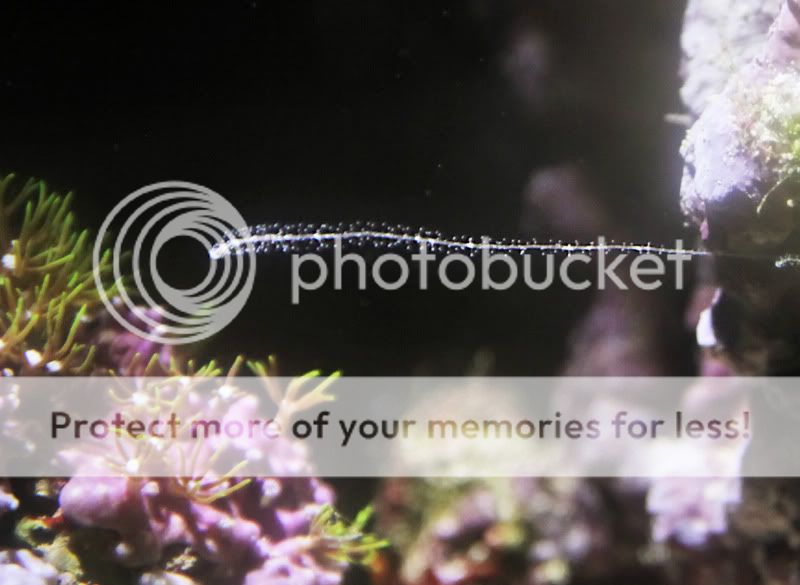oscarinw
New member
Today I made a grim discovery. A seemingly healthy small colony of zoas had been dying slowly in my tank. I kept my eyes open for any 'grazer' for about a month to no avail. Today, I noticed a little stringy 'worm' next to the colony. I had seen this type of 'worms' in the tank so I had not suspected it before. On close inspection I realized this 'worm' had a 'sticky' nature. Sort of those you see on anemones when they sting something. I also noticed it contracted and relaxed quite a bit and that it had hair like structures coming of it... more pronounced towards the end. The larger ones are about 2 inches in length.
Introducing the digitate hydroids

All of the sudden it hits me: This thing has the exact reach of the area my zoas colony had disappeared/died. The closest polyp was almost at reach length so I decided to pay attention to it. A couple of minutes later, it barely brushed against the open poly, stuck to it for a brief moment and the zoa closed like its life depended on it. A little digging around this forum and other, I realize it is not a harmless worm as initially thought.
For probably the past 3 months I had noticed it and did nothing to it, just watched it multiply.
Couple of findings of my perusing on the internet:
One of the people on the threads indicated having treated with 'boiling' water. So that was my method of choice for the just concluded first round of this battle. I used a fine curved tip syringe

Got some RO water to boil in the microwave and started squirting these guys. It apparently works. They shrink and become non responsive and many dislodge its long arm.
I must have squirted about 20 of them this afternoon and there are only a couple left in sight. They are just in areas I can't reach with the syringe.
I also used a different method in about 3 of them that were located in close proximity: Using the syringe, I vacuumed the arm and then pulled quickly so to sever it. I could see the arms inside the syringe. I will keep checking to see if those regrow.
I will report back here with any findings in the future.
Introducing the digitate hydroids

All of the sudden it hits me: This thing has the exact reach of the area my zoas colony had disappeared/died. The closest polyp was almost at reach length so I decided to pay attention to it. A couple of minutes later, it barely brushed against the open poly, stuck to it for a brief moment and the zoa closed like its life depended on it. A little digging around this forum and other, I realize it is not a harmless worm as initially thought.
For probably the past 3 months I had noticed it and did nothing to it, just watched it multiply.
Couple of findings of my perusing on the internet:
- People tend to confuse colony hydroids with these guys. They are not the same.
- A lot of people suggest taking the rock out and boiling the rock. Please be careful with this.
- Some people indicate they naturally come and later disappear. In my case, they have been reproducing quite effectively.
One of the people on the threads indicated having treated with 'boiling' water. So that was my method of choice for the just concluded first round of this battle. I used a fine curved tip syringe

Got some RO water to boil in the microwave and started squirting these guys. It apparently works. They shrink and become non responsive and many dislodge its long arm.
I must have squirted about 20 of them this afternoon and there are only a couple left in sight. They are just in areas I can't reach with the syringe.
I also used a different method in about 3 of them that were located in close proximity: Using the syringe, I vacuumed the arm and then pulled quickly so to sever it. I could see the arms inside the syringe. I will keep checking to see if those regrow.
I will report back here with any findings in the future.
